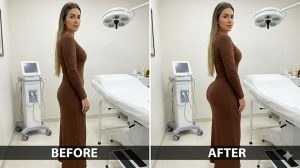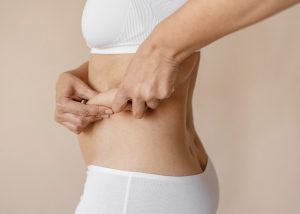Doctors report that variations in nipple sensation after breast reduction depend on several factors, such as the extent of surgery, the body’s individual response, and the chosen technique. Some women notice different sensations within the first few weeks, while others experience longer-lasting changes.
Understanding how nipple sensation after breast reduction might evolve helps prepare patients for the recovery process. Knowing what to expect, when to talk to the surgeon, and which signs to monitor supports ongoing care and makes the post-surgery journey smoother.
This article covers the factors influencing nipple sensation after breast reduction, how often changes happen, expected recovery timelines, and tips to support healing.
What causes changes in nipple sensation after breast reduction?
Nipple sensation after breast reduction might change due to nerve handling during surgery. Throughout the procedure, some nerves connecting the areola to the rest of the breast may get affected, especially when larger amounts of tissue are removed.
The location of the incision, the volume of removed tissue, and the need to reposition the areola directly influence nipple sensation after breast reduction. Techniques involving greater areola movement tend to show more reports of altered sensation.
Other factors like individual healing characteristics, patient’s age, and the presence of comorbidities also impact nipple sensation after breast reduction. Each body reacts differently, which explains the wide variety of experiences patients report after the procedure.
How common is loss of nipple sensation after breast reduction?
Loss of nipple sensation after breast reduction appears at different intensity levels among patients. Studies conducted in the United States show that between 10% and 50% of women report some temporary or permanent change in sensation after surgery.
Most patients notice mild to moderate changes in nipple sensation after breast reduction during the first weeks of recovery. In many cases, this change shows signs of improvement over time.
While permanent loss of nipple sensation after breast reduction remains a possibility, records show that complete absence of sensation happens less frequently when surgery is performed by experienced specialists.
Can nipple sensation after breast reduction return over time?
Some women notice signs of sensation returning within the first six months after surgery, while others report gradual progress over a year or longer.
Factors like the extent of the procedure, the type of technique used, and the body’s individual healing response influence the recovery timeline of nipple sensation after breast reduction. Cases involving less areola movement tend to show higher chances of sensory recovery.
Nerve regeneration occurs slowly. Small signs like tingling, mild burning sensations, or gradual improvement in touch perception suggest that nipple sensation after breast reduction might be returning.
Regular medical follow-up helps identify recovery patterns and guides safe strategies to support sensory regeneration.
Read more:
👉Will my breasts grow back after a breast reduction?
👉8 tips for minimizing scars post-breast reduction
Does the surgical technique impact nipple sensation after breast reduction?
The surgical technique used directly influences nipple sensation after breast reduction. Procedures that preserve nerves around the areola tend to be associated with higher rates of sensation maintenance.
Among the techniques the following stand out:
- Vertical incision (lollipop): reduces areola movement and shows less impact on nipple sensation after breast reduction.
- Anchor incision (inverted T): applied in cases with larger amounts of tissue, may involve greater manipulation of the areola.
- Free nipple graft reduction: used in extreme cases, where the areola is removed and repositioned as a graft, associated with higher risk of sensation loss.
Specialized surgeons usually plan approaches aiming to balance aesthetic results and preservation of nipple sensation after breast reduction.
Even with more conservative procedures, anatomical factors and healing patterns influence the sensory outcomes after surgery.
Read more:
👉 How much does a breast lift cost?
What to expect in the first months after breast reduction
During the first months after surgery, nipple sensation after breast reduction might show several changes. These variations are part of the natural healing process and usually differ among patients.
In the first 30 days, common experiences include:
- Partial or total numbness around the areola.
- Occasional tingling, indicating early nerve regeneration.
- Hypersensitivity in specific areas of the breast.
Between the second and fourth months, patients often notice:
- Fluctuations in sensation, with periods of improvement and regression.
- Gradual return of tactile perception in regions near the areola.
- Mild burning sensations associated with nerve ending growth.
After the fourth month, many patients report:
- Stabilization of sensation in part or all of the operated area.
- Progressive improvement in nipple sensation after breast reduction, although slowly.
- Need for adjustments in postoperative care to support sensory recovery.
Keeping regular follow-ups with the surgeon during this time helps monitor the evolution of nipple sensation after breast reduction and adjust care recommendations according to each patient’s individual response.
When to consult your surgeon about nipple sensation after breast reduction
Ongoing medical follow-up after surgery helps identify normal patterns and signs requiring attention. Regarding nipple sensation after breast reduction, certain situations suggest the need to consult the surgeon:
- Persistent complete lack of sensation after six months.
- Intense painful sensations or localized discomfort without progressive improvement.
- Sudden changes in sensation after a previously stable period.
- Areas of hardening, redness, or discharge near the areola.
- Significant sensory asymmetry between the two breasts.
Talking with the surgeon helps assess whether the evolution of nipple sensation after breast reduction follows expected patterns or whether specific interventions might support recovery.
Early communication with the medical team helps detect issues safely and promotes better long-term outcomes.
Understanding nipple sensation after breast reduction
Knowledge about the factors influencing nipple sensation after breast reduction, such as the surgical technique used, the volume of tissue removed, and postoperative care, helps prepare patients for realistic expectations during recovery.
Regular medical follow-up, attention to body signals, and appropriate care practices promote better long-term outcomes in the recovery of nipple sensation after breast reduction. Open communication with the surgeon remains a key part of this process.



